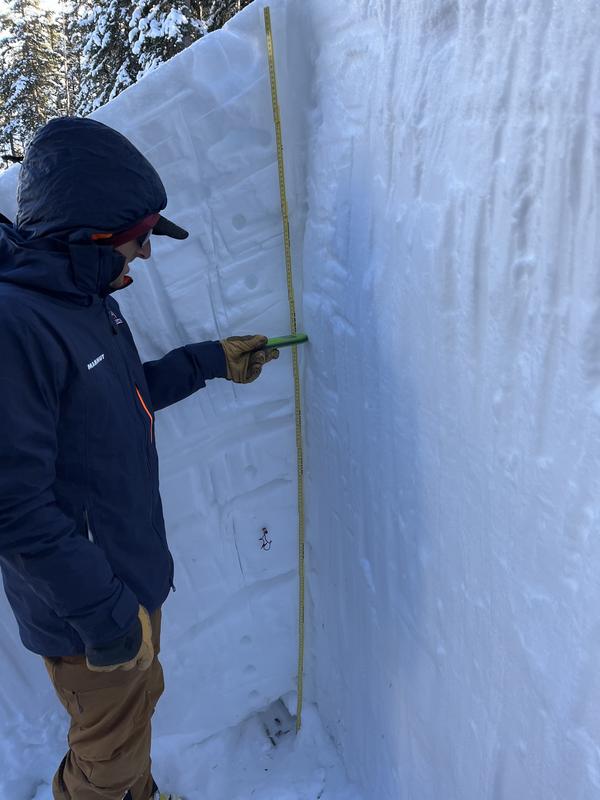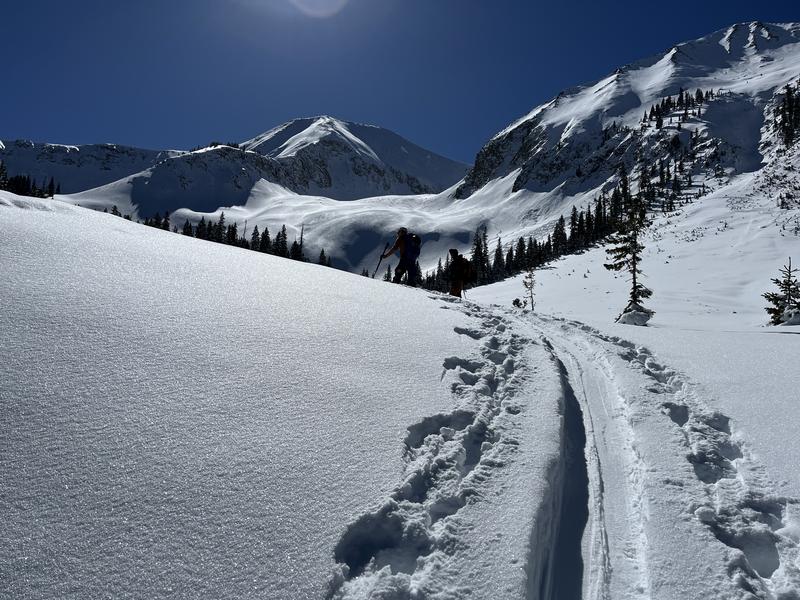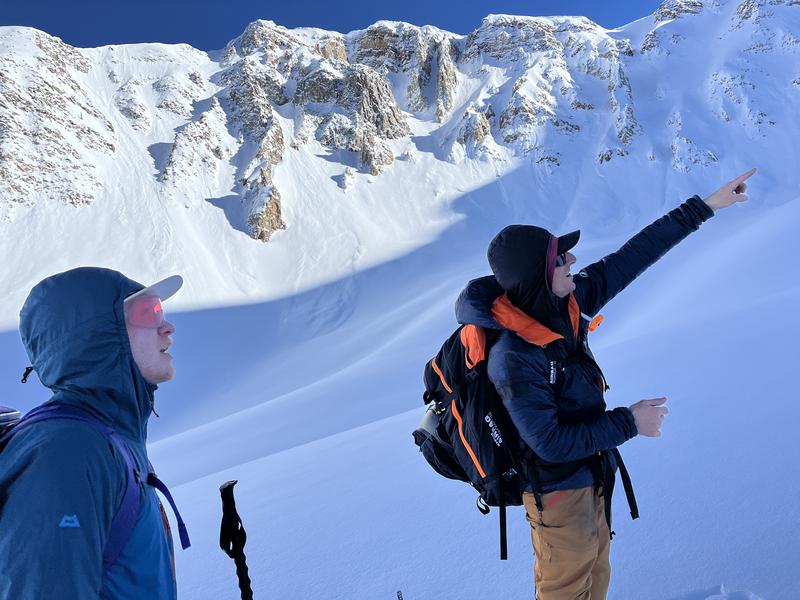Observation Date
2/13/2024
Observer Name
Charlie R, Dave G, Wyatt
Region
Moab » Gold Basin » Middle Cirque
Location Name or Route
Tuk N Ridge
Comments
You can see how deep our snowpit was. The hardness testing isn't really clear in the photo, but so much of the snow is 1F and well bonded.

People found excellent skiing on S and SW aspects over the weekend. Those snow surfaces have changed and if you're wanting to hunt for soft snow, you'll be looking towards the colder slopes.

Be careful! We do have this 'stability trend' happening right now. Our party, as well as others have been stepping out into terrain and been willing to be exposed to potential hazard. The photo here is one of the many assessments we did throughout the day to justify our travel plan. Careful and thorough snowpack analysis and an understanding of your parties risk tolerance is vital to making decisions that will have positive outcomes.
The recent avalanches in Gold Basin have reminded us so much of how subtle aspect and steepness can be. Particularly in the Funnel, easy to think that is just a SW aspect, but the NW terrain trap at the bottom recently avalanched. Complex terrain like this can catch us off guard. If you're considering stepping out, look for simple terrain with clean runouts.

Today's Observed Danger Rating
Considerable
Tomorrows Estimated Danger Rating
Considerable
Coordinates






